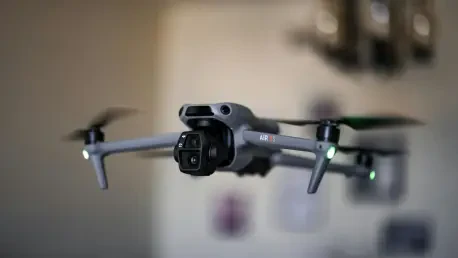In a world where technological advancement continually pushes boundaries, imagine a dense forest teeming with obstacles and unpredictable terrain. A human effortlessly navigates these challenges, relying on a harmonious blend of sight, sound, touch, and balance. Yet, a robot falters, its reliance on single sensory input leaving it ill-equipped to adapt. Why can’t robots navigate the world as intuitively as humans?
Bridging the Gap in Robotic Navigation
Technological progress has placed significant focus on replicating human-like sensory perception in robots, a crucial step toward effective navigation in complex environments. As these environments become more demanding, ranging from post-disaster scenarios to intricate natural landscapes, the limitations of traditional robots have become glaringly apparent. While human adaptability shines in such settings, questions arise about the caliber of robot performance under similar conditions. This scenario underscores a critical need for innovations that expand robotic capabilities beyond current constraints.
A Deeper Look at WildFusion’s Innovations
WildFusion emerges as a groundbreaking solution, leveraging an integrative approach that combines various sensory modalities. Incorporating RGB cameras, lidar, inertial sensors, contact microphones, and tactile sensors, this framework surpasses traditional navigation methods. Unlike systems overly dependent on visual input, WildFusion’s technology draws upon a multisensory approach to mimic human sensory perception with grace and accuracy. A compelling case study at Eno River State Park demonstrated its efficacy in real-world scenarios, as robots equipped with WildFusion technology traversed diverse terrains with remarkable adeptness, making informed decisions based on real-time data.
Insights from Experts in the Field
The radical impact of WildFusion shines through expert opinions and scholarly insights. Researchers from Duke University and leading robotics specialists agree that this innovative system mirrors the human sensory experience with an impressive degree of accuracy. According to a robotics professor, the system’s ability to synthesize and interpret multisensory inputs holds promise for advancing autonomous navigation, representing a meaningful leap toward making robotic operations as seamless as those of skilled human explorers. Anecdotal evidence further supports WildFusion’s transformative potential, with reports highlighting its capability to function under unpredictable circumstances, reminiscent of human intuition and decision-making.
Implications and Vision for the Future
Visualize the realm of possibilities that WildFusion opens up, where robots effectively scuttle through rescue operations, meticulously inspect remote infrastructures, and venture into the untouched wilderness with ease. The promise of integrating even more sophisticated sensors, like thermal detectors, predicts a future where robotic comprehension of complex environments reaches unprecedented heights. In this evolving landscape, technology enthusiasts and professionals alike keep a watchful eye on the unfolding development of WildFusion, contemplating its vast applications and transformative influence on various sectors.
Realizing the Potential of Robotics
The landmark achievements of WildFusion mark a significant chapter in the robotics domain, heralding advancements that previously seemed out of reach. As modern technology continually evolves, the pathway is set for research and innovation to carve out even more sophisticated systems capable of navigating the unpredictable terrains of our world. Looking ahead, stakeholders embrace the continuing dialogue around multisensory advancements in robotics, driven by anticipation of what such developments can ultimately achieve. The commitment to evolving robotic systems underscores a dynamic future, poised to redefine how machines perceive and interact with the natural world.









